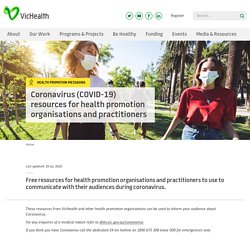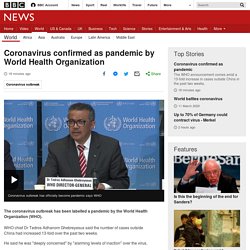

Australia needs a more consistent and sensible approach to Covid-19 border decisions. Border closures to date have been inconsistent across states and territories.

An event in one state will result in different national travel rules for residents depending on where they need to travel to, and different states also respond to equivalent events quite differently. For example, Victoria has put the entire state into lockdown with the most recent Holiday Inn hotel quarantine breach, whereas Western Australia and Queensland focused on the more immediate urban areas where potential exposures occurred. Federation should create a collaborative framework for assessing and managing risks consistently, but it is failing us. The first step in considering border closures is the trigger – a credible risk of wider community transmission that warrants management of people movement at scale, possibly including border closure.
The justification for closures is to protect one jurisdiction from community transmission in another. At Victoria’s COVID-19 hotel quarantine inquiry, Daniel Andrews has squarely pointed the finger of blame - ABC News. Coronavirus COVID-19. Special Issue : COVID-19 Global Threat: Information or Panic. Dr.

Carlos de las Heras-PedrosaWebsiteSciProfilesGuest Editor Department of Audiovisual Communication and Advertising, Universidad de Málaga, Malaga, SpainInterests: health communication; tourism communication; communication and social media; influencers on social media; institutional communication; stakeholder engagement Dr. Australian Government Department of Health. Current status The situation is changing rapidly.

Symptoms If you have serious symptoms such as difficulty breathing, call 000 for urgent medical help. COVID-19 (Coronavirus) resources - COVID-19 (Coronavirus) On this page Fact sheets and brochures Easy English Letter templates.

Coronavirus (COVID-19) resources for health promotion organisations and practitioners. Skip to navigationSkip to contentSkip to footer Home Health promotion messaging Coronavirus (COVID-19) resources for health promotion organisations and practitioners Share on facebookShare on twitterEmailShare on linkedIn Last updated: 20 Jul, 2020.

Life and Health Re imagined Where do we go next with prevention. COVID-19 Map - Johns Hopkins Coronavirus Resource Center. COVID‐19 puts the spotlight on food insecurity in rural and remote Australia. Bird flu outbreak at Bairnsdale in Victoria sees 4,000 turkeys euthanased - ABC News. Donald Trump and Anthony Fauci's coronavirus narratives differ, but could the President really fire the top disease expert? - ABC News.
In Melbourne under stage 4 restrictions and feel like screaming at coronavirus? You're not alone - ABC News. Australia has a contentious history of curfews — will one help Melbourne beat coronavirus? - ABC News. I travelled through five state borders in the middle of the pandemic, and what I experienced may shock you - ABC News. These maps show how coronavirus lockdowns emptied our cities. Australian health sector emergency response plan for novel coronavirus covid 19 2. Australian National Disease Surveillance Plan for COVID-19. Coronavirus: When teaching during a disaster, students need to be partners. Many universities and colleges are planning to teach most of their courses online in the fall, even though there are still many unknowns.

Post-secondary institutions first transitioned from face-to-face to online learning in March, when the threat of COVID-19 emerged. Institutions brought differing levels of experience and preparedness to this endeavour. Experts in educational technology weighed in on the best ways to both understand and implement such a rapid transition.
But what was missing, for the most part, were insights and practices from the field of disaster and emergency management. Key insights Having worked on responses to wildfires, floods, tornadoes, hurricanes, earthquakes and tsunamis over the past 30 years, I have learned about how to work in conditions of uncertainty and when there is an urgent need to act. The ability to adapt and improvise when necessary is a key to success. Students as partners Invaluable focus group In a partnership, learning goes both ways. A new normal. Fighting the invisible enemy: What these images reveal about the coronavirus. Think of coronavirus as a test run: Australian military leaders warn we must prepare for worse - ABC News.
Australia ran its last national pandemic drill the year the iPhone launched. Did that harm our coronavirus response? Updated about an hour agoMon 20 Apr 2020, 1:23am Some of the early failures in Australia's management of the novel coronavirus pandemic this year could have been avoided if all levels of Government had been trained using simulated exercises, leading health planners have told the ABC.

Key points: Australia has not run a large-scale pandemic simulation exercise since 2008Australia was a world leader in planning for a pandemic in the 2000s, but events like the global financial crisis and Australian political chaos distracted successive governmentsDeputy Chief Medical Officer Paul Kelly says Australia is in a much better position than other countries Australia has not run a large-scale national pandemic exercise since 2008: Kevin Rudd was serving his first year as prime minister and the first iPhone entered the market and changed the way people communicate.
One coronavirus number will let us know if Australia’s outbreak is getting worse. Confirmed as pandemic by World Health Organization. Media playback is unsupported on your device The coronavirus outbreak has been labelled a pandemic by the World Health Organization (WHO).

WHO chief Dr Tedros Adhanom Ghebreyesus said the number of cases outside China had increased 13-fold over the past two weeks. He said he was "deeply concerned" by "alarming levels of inaction" over the virus. A pandemic is a disease that is spreading in multiple countries around the world at the same time. However, Dr Tedros said that calling the outbreak a pandemic did not mean the WHO was changing its advice about what countries should do.
Read the latest on the coronavirus here He called on governments to change the course of the outbreak by taking "urgent and aggressive action". Rapid risk assessment: Novel coronavirus disease 2019 (COVID-19) pandemic: increased transmission in the EU/EEA and the UK – sixth update. On 31 December 2019, a cluster of pneumonia cases of unknown aetiology was reported in Wuhan, Hubei Province, China.

On 9 January 2020, China CDC reported a novel coronavirus as the causative agent of this outbreak, which is phylogenetically in the SARS-CoV clade. The disease associated with the virus is referred to as novel coronavirus disease 2019 (COVID-19). As of 11 March 2020, 118 598 cases of COVID-19 were reported worldwide by more than 100 countries. Since late February, the majority of cases reported are from outside China, with an increasing majority of these reported from EU/EEA countries and the UK. Risk assessment on COVID-19, 10 August 2020.
As countries regained control of transmission and alleviated the burden on healthcare, many measures were relaxed or removed to allow for a more viable way of life with the virus in circulation.

How coronavirus 'changes the game' for the anti-vaccination movement. Posted about an hour agoSat 30 May 2020, 11:35pm As humanity waits impatiently for a coronavirus vaccine, a determined minority is exploiting the crisis to push the health debate down a path of alternative truth. Key points: There has been a sharp rise in online activity by anti-vaccination groupsThat activity is being spread by a few global actors, including AustraliansSocial media platforms have failed to control the spread of this disinformation On social media platforms like Facebook, Instagram, YouTube and TikTok, global networks of influencers share memes, flood comment sections and promote videos aimed at white-anting a drug that does not yet exist.
Some have even claimed the coronavirus pandemic is a manufactured crisis designed to allow a cabal of billionaires, Big Pharma and global bureaucrats led by philanthropist Bill Gates to use a vaccine as a ruse to implant microchips in people. An international network. Four Corners goes inside an Australian coronavirus clinic that tests for cases of COVID-19. Updated 6 Apr 2020, 7:49amMon 6 Apr 2020, 7:49am From the road, all you can see are some makeshift barricades and a few printed laminated signs to suggest what goes on inside the COVID-19 Screening Clinic. Four Corners gained access to the testing clinic at the Royal Melbourne Hospital to see first hand what frontline staff and patients are experiencing every day during the crisis. The hospital's CCTV cameras capture lines of people waiting outside, and hospital corridors full of people waiting to be seen.
Around 100 people per day queue up at the clinic to find out if they've contracted the highly contagious and potentially deadly virus that has stopped the world. The clinic has already processed about 4,000 tests. On arrival at the hospital, the sick are met by a nurse who hands out face masks and then escorts them in for a series of questions about their possible exposure to the virus. Patients are led to another checkpoint, where they have their pulse and blood pressure taken. COVID-19: This tool tracks coronavirus's path in Europe. While some European countries are easing restrictions, others remain under lockdown. The World Economic Forum created a tool tracking the distinct path of COVID-19 within European countries.
Europe is starting down an uneven road to recovery. Denmark is reopening society more quickly than anticipated, and Switzerland is eyeing the easing of emergency measures. At the same time, France has extended its lockdown period and the UK has said its restrictions will remain in place for the foreseeable future – as those countries continue to suffer dearly from the fallout of COVID-19.
The background for this disparity has been disagreement over matters including whether to jointly issue debt to fund Europe’s collective rehabilitation. Europe’s patchy attempted return to normalcy might make retracing the coronavirus’s path across individual countries in the region instructive. Four Corners. Health Archives. Antibiotic Resistance: The Top 10 List.
Medically reviewed by Leigh Ann Anderson, PharmD. Last updated on Jul 29, 2019. Intro | FAQs | Tables of Resistant Bacteria and Treatment Options | Recently Approved Antibiotics What is Antibiotic Resistance? Antibiotic resistance is an urgent threat to global health, and the US Centers for Disease Control and Prevention (CDC) considers it one of their top concerns. Antibiotic resistance is the ability of bacteria to withstand the antimicrobial power of antibiotics. The rates of resistance to antibiotics continue to rise due to overuse of antibiotics, and new antimicrobial agents are slow to be developed. Each year 2 million people get an antibiotic-resistance infection, and close to 23,000 people die. Frequently asked questions about antibiotic resistance include: How do bacteria become resistant to antibiotics? Bacteria become resistant to antibiotics by adapting their structure or function in some way as a defense mechanism.
This adaptation can happen in several ways. 1.